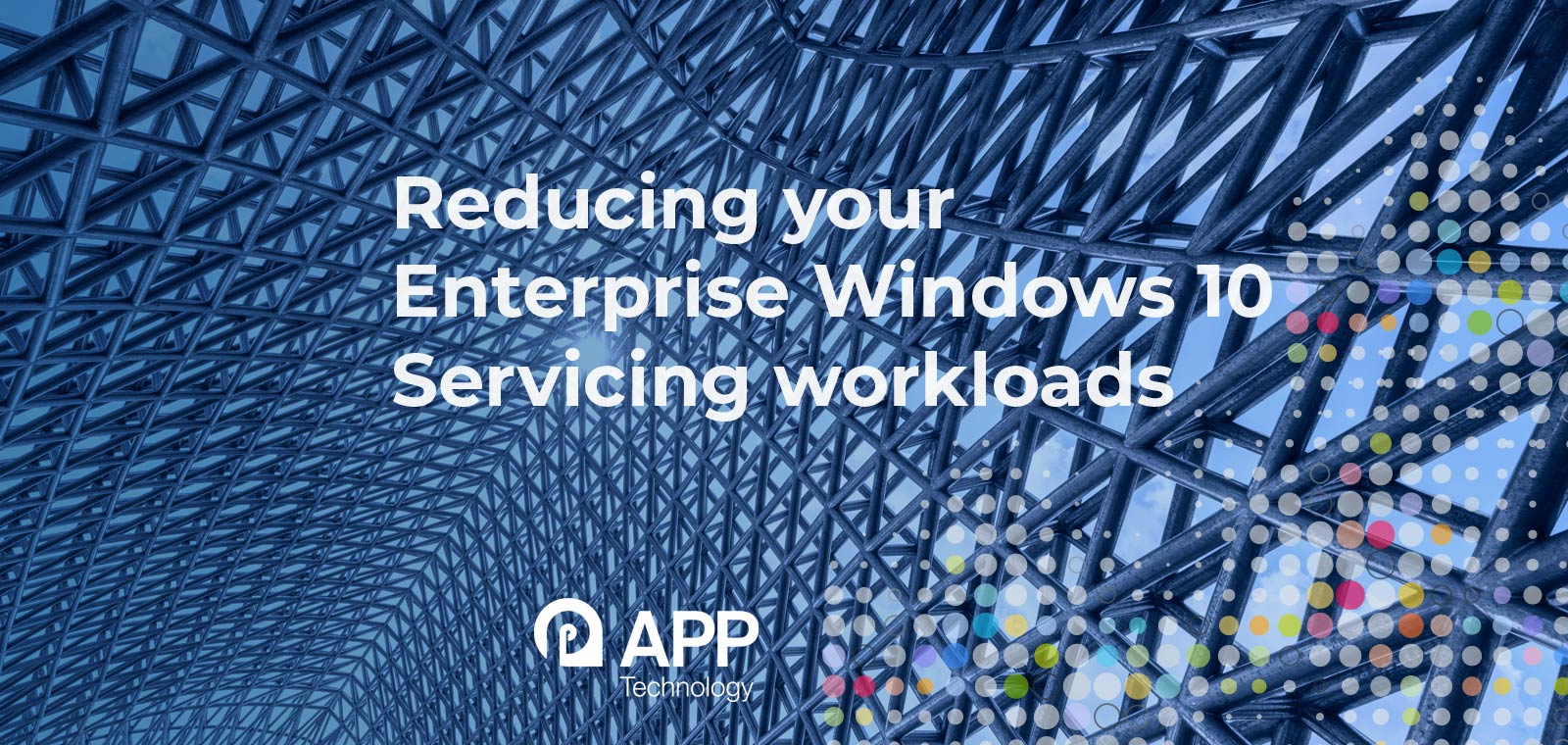Reducing your Enterprise Windows 10 Servicing workloads

Windows 10 Release 1809 was a good choice for Enterprise OS migrations. It was the target Build for many, but inevitably went end of life in May 2021.
Having reached Windows 10, many organisations found it a challenge to embed the principles of Windows 10 Servicing into their ongoing internal service management. The delivery of these servicing principles were of course impacted by the Pandemic, with IT concentrating on emergency measures to achieve safe remote working, rather than the operational delivery of a higher internal Windows 10 servicing workload.
Since then, and with the shorter support cycle, Windows 10 build 1903 has gone end of life, and Build 2004 has an imminent end date in December 2021. The result being that many organisations are faced with being on a currently unsupported or imminently unsupported Windows 10 version if they are struggling with Windows Servicing workloads.
Instead of driving Windows 10 servicing models, enterprises have been concentrating on the move to Microsoft Endpoint Management, with a Cloud first approach where possible. Implementations of Intune and Autopilot have skyrocketed, with larger organisations increasingly looking to undertake the transition to Intune only endpoint management, with a drive to remove Hybrid operations involving Configuration Manager. As Intune feature releases were coming at a rate of over one per working day in the first half of 2021 this is understandable.
As of today, the best balance of support and upgrade activity within an Enterprise is to reach Windows 10 Build 20H2 as soon as possible, and to plan to upgrade to Build 2022 H2 when available (see Windows 10: Identifying the last Enterprise build that counts. The release / support overlap for theses will give Enterprises around 7 months to complete the upgrade in early 2023, with the general expectation that Build 2022 H2 will reach the end of Windows 10 support life in 2025, before Windows 11 becomes the mainstream Enterprise Operating System.
APPtechnology can assist with the delivery or resourcing requirements to quickly and efficiently get your environment to Build 20H2, and to help you embed the Windows 10 servicing methodologies to streamline your Windows Servicing models. Once implemented, your future transition to 2022 H2 should be more operational instead of a dedicated project.
Alternatively, APPtechnology can undertake your servicing for you, covering OS, security and application management, ensuring that your OS Build upgrades and endpoint management are covered with minimal operational impact on your organisation.
What are your Enterprise Windows 10 Servicing challenges?
If you would like a conversation around the Enterprise Windows 10 Servicing challenges you face, then please reach out to an APPtechnology Director via our contacts page.
